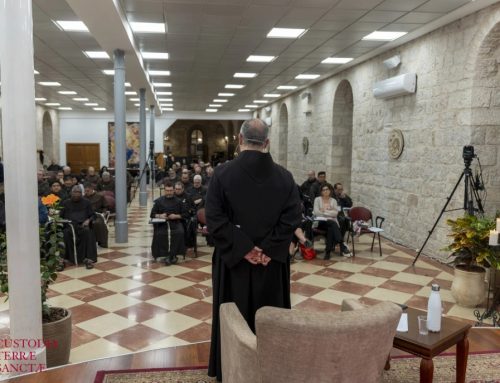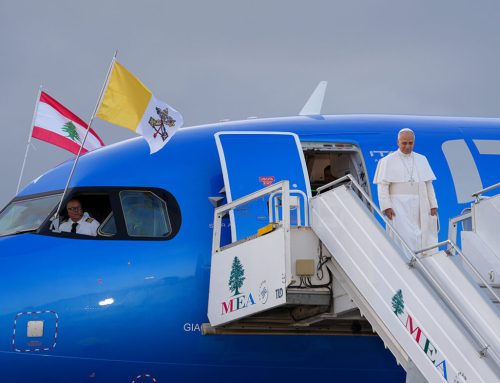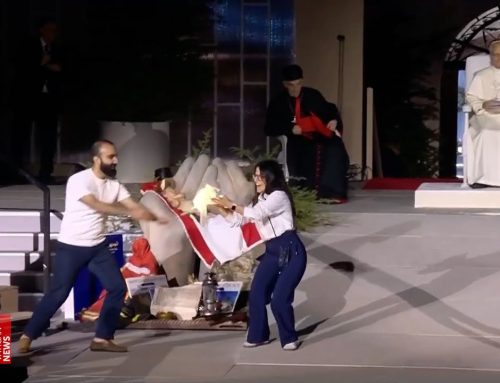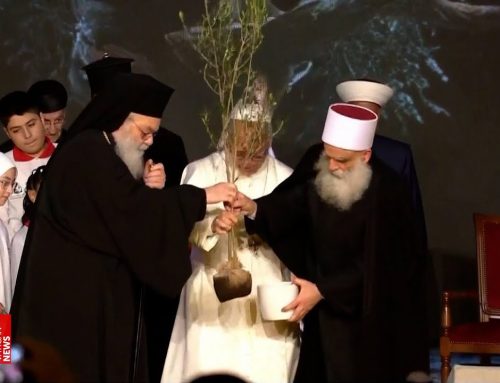Last Friday I thought I would take a friend to the Israeli military checkpoint in Bethlehem, but kept hearing a remark that was made to me earlier in the week, “International observers are needed in the north.” On the spur of the moment I asked my friend if she would like to go north to Kalandia where during the week there had been a massive military build-up and the Israeli Occupation Forces had invaded two refugee camps. She was agreeable to go north of Jerusalem.
Last Friday I thought I would take a friend to the Israeli military checkpoint in Bethlehem, but kept hearing a remark that was made to me earlier in the week, “International observers are needed in the north.” On the spur of the moment I asked my friend if she would like to go north to Kalandia where during the week there had been a massive military build-up and the Israeli Occupation Forces had invaded two refugee camps. She was agreeable to go north of Jerusalem.
We took the shared van and when we arrived at the Kalandia, the Palestinian van driver told us to be careful. The checkpoint was closed to all traffic. Soon a Belgian journalist and photographer arrived, and they had been told by their taxi driver about a footpath a kilometer east of the checkpoint that would lead to the Kalandia refugee camp. We agreed to try to walk along with many of the local people, climbing over steep mounds of dirt and then through a dump site. Once at Kalandia we decided to share a ride with the Belgians on into Al-Birah and then my friend and I decided to go farther north to Ramallah.
In Ramallah we just happened to meet up with a group of Internationals who were there in solidarity with the Palestinians. An “End the Occupation” march was planned and we joined the Internationals in a peaceful walk through the city past President Arafat’s compound. On one side of me was Gochi, a Jewish man from Switzerland who comes to the West Bank as often as he can. He humbly told me that he represents his synagogue in their solidarity with the Palestinians and their protest against the Israeli Occupation. On the other side of me was Yvonne, representing the Trade Unions of the EU. Yvonne brings teachers over here to visit the West Bank and Gazan schools, manufacturers to visit the small factories in Palestine so they can understand what is happening to industry here due to the occupation. She brings merchants here so they can see what has happened to the commerce in the West Bank and Gaza. Yvonne does a good job of net-working people and I was also deeply touched by Gochi’s sincere concern for the plight of the Palestinians.
When we arrived at the city limits of Ramallah we saw Isreali Occupation Force jeeps and most of the Internationals stopped. Some people, mostly Palestinian youths kept slowly walking forward. About five tear gas cannisters were sent into their midst. Then while they were still overcome by the tear gas, the soldiers opened fire into the crowd. People scattered and some fell. All the ambulances, which had accompanied us as they do at all demonstrations, now were loading the injured and turning back with the wounded. Suddenly, four young men were running and carrying someone who was wounded past me to an ambulance which had remained at the back of the marchers.
Later as I reflected on the events of the afternoon, I realized there must have been intense fear or something else in the minds or emotions of the Israeli Occupation Force to make them shoot into the crowd. When I returned to Jerusalem I saw that Friday’s Israeli newspaper, “Ha’Aretz” had a large front page notice which read: “GET OUT OF THE TERRITORIES — Get back to ourselves — STOP THE KILLING! The imperative of the hour is to get out of the territories and return to negotiations.” This notice referred to an Israeli demonstration that was planned for Jerusalem at the end of Shabat. Both Israelis and Internationals who are here, are trying to get a message through…if only the “powers that be” would listen.





